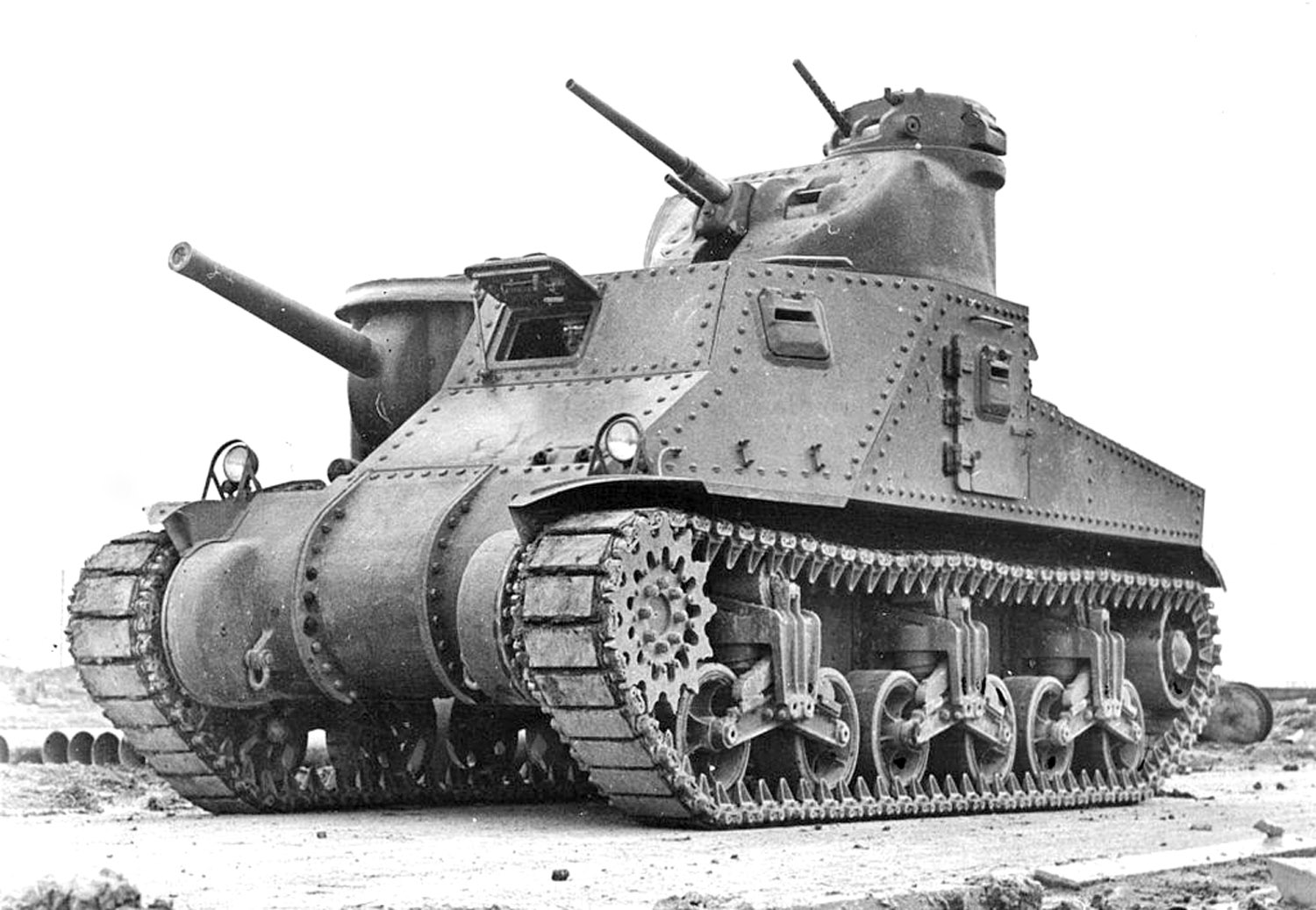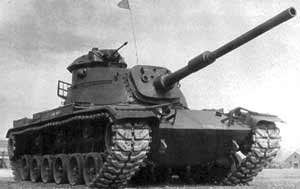Skip to comments.
Russian Museum Recreates WWII-Era 'Land Battleship'
Popular Mechanics ^
| April 18,2018
| Kyle Mizokami
Posted on 04/19/2018 8:58:37 AM PDT by C19fan
A copy of the largest tanks of World War II was produced for a Russian military museum. A working T-35 tank, which weighed even more than Russia’s newest main battle tank, was built by the metallurgical company Uralelectromed JSC for the Museum of Military Equipment in the Sverdlovsk region, Russia.
During the years between World War I and World War II, the new Soviet state pursued an aggressive military expansion plan, including the mechanization of its armed forces. The construction of heavy tanks—heavier than any of those fielded by any other country—was meant to grow Soviet heavy industry, encourage the study of engineering, as well as strengthening the Soviet military.
(Excerpt) Read more at popularmechanics.com ...
TOPICS: History; Military/Veterans
KEYWORDS: russia; soviet; tanks
Navigation: use the links below to view more comments.
first previous 1-20, 21-36 last
To: GreenLanternCorps
21
posted on
04/19/2018 10:32:45 AM PDT
by
Little Ray
(Freedom Before Security!)
To: Rinnwald
From my limited understanding the French hadn’t a clue as to proper use of armor at the outbreak of the war.
They sent their tanks into battle piecemeal instead of using them in tandem with infantry.
By their tactics they were doomed to fail.
In contrast General Patton had studied the writings of Rommel and Guderian and had a better understanding of the uses of armor with infantry in battle.
Patton said the problem with the Brits and French was they were always well prepared to fight the last war, not the new one.
22
posted on
04/19/2018 10:51:02 AM PDT
by
oldvirginian
("The people built this country. And it is the people who are making America great again.” D TRUMP)
To: MeganC
“deliberately kept ignorant of technical information”
Interesting. Perhaps it was if captured, they could not divulge technical/functional information.
23
posted on
04/19/2018 10:51:18 AM PDT
by
V_TWIN
(oks like)
To: GreenLanternCorps
Cool pic! Thanks for posting it!
24
posted on
04/19/2018 10:54:05 AM PDT
by
BradyLS
(DO NOT FEED THE BEARS!)
To: C19fan
Looks to me like it has a turret on its turret.
Mind
Blown
25
posted on
04/19/2018 11:52:53 AM PDT
by
ExGeeEye
(For dark is the suede that mows like a harvest.)
To: V_TWIN; C19fan
“very limited combat during Barbarossa due to the tanks breaking down before they could reach the combat zone.”
Well, that would be a bit of a drawback. lol Not if you'd ever crewed in a Soviet T-26.
26
posted on
04/19/2018 1:10:54 PM PDT
by
archy
(Whatever doesn't kill you makes you stronger. Except bears, they'll kill you a little, then eat you.)
To: V_TWIN
Sounds like a tactical error, not training the crew to do field repair. What were they....unionized? lol Stalin's purges of the 1930s cleared out a great many of the Red Army's support officers and technicians. And expecting conscript peasants to perform maintenance at any level beyond that of a collective farm tractor driver was little better than a propaganda exercise.
On the other hand, once some of those former tractor jockeys got out of the 1940-1941 tin cans and into KVs and T-34s, they did pretty good. That was also true of 1940 US tank crews in M3A1 light tanks and M3 mediums who later ran their Shermans from Sicily to Normandy to the Rhein as well.
27
posted on
04/19/2018 1:17:39 PM PDT
by
archy
(Whatever doesn't kill you makes you stronger. Except bears, they'll kill you a little, then eat you.)
To: DuncanWaring
Ping. That would be the sound of a 7,9mm Mauser round bouncing off the turret armor.
28
posted on
04/19/2018 1:18:58 PM PDT
by
archy
(Whatever doesn't kill you makes you stronger. Except bears, they'll kill you a little, then eat you.)
To: ExGeeEye
Looks to me like it has a turret on its turret.
Mind
Blown US M3 Lee, circa 1940:

Known nowadays as a *commander's cupola,* the M48/M48A3, M60 and M60A1 tanks in which I crewed had them, with a .50 M2 usually mounted, usually inside, where the TC was not exposed to fire when the 105-round ammo belt went dry after about ten bursts. The Israelis found that when a High Explosive shell hit one, it usually blew the cupe off, sending the top half of the tank commander along with it- and when they rebuilt our '48s and '60s into Magach 7s and 8s, they left the cupolas off but mounted a .50 coaxially over the main gun tube.


29
posted on
04/19/2018 1:34:49 PM PDT
by
archy
(Whatever doesn't kill you makes you stronger. Except bears, they'll kill you a little, then eat you.)
To: archy
I would have thought that would have been more of a “splat-whiiiiiiiiiiine” of gradually decreasing volume.
30
posted on
04/19/2018 1:56:27 PM PDT
by
DuncanWaring
(The Lord uses the good ones; the bad ones use the Lord.)
To: rjsimmon
31
posted on
04/20/2018 3:17:15 AM PDT
by
Spktyr
(Overwhelmingly superior firepower and the willingness to use it is the only proven peace solution.)
To: oldvirginian
That wasn’t by choice - the French intended to send their tanks into action by formations. One problem was that most French tanks didn’t have radios and once they’d encountered German blitzkrieg tactics, their main formations were broken because they were unable to change tactics or posture without radio communication between tanks. French doctrine emphasized that all operations would proceed according to a pre-arranged plan and that as no deviation was to be made from it, there was no need for radio. Just follow the plan - which, if the Germans had been so obliging as to cooperate, would have resulted in Panzer IIIs getting slaughtered by mass Somua and Char tank formations.
After reality bashed in the skulls of the plans the French had and the radio-heavy Wehrmacht scrapped their plan-bound initial opponents, the French then rushed what tanks they could up but they ended up getting to the front lines in penny packets instead of powerful formations not because they wanted to but because they needed something, anything to plug the gap and stem the oncoming tide. They simply didn’t have the time or space to marshal a tank formation and to be fair it wouldn’t have mattered if they did due to the lack of radios.
The French had an excellent grasp of the proper use of armor at the beginning of the war. What they didn’t have was a grasp of the proper unit control and strategy in an age of mobile warfare - it wasn’t just tanks that suffered from this problem. See this video, starting at about 4:38 (though the whole video is worth watching) for more info: https://www.youtube.com/watch?v=hGpdXRaILe0
The presenter is an armor officer who served in the Irish Army and in combat in the Sandbox in the US Army in the Abrams.
32
posted on
04/20/2018 3:35:00 AM PDT
by
Spktyr
(Overwhelmingly superior firepower and the willingness to use it is the only proven peace solution.)
To: Spktyr
I knew the French didn’t have radio equipped armor while the Germans did. That made a world of difference.
The Germans were easily able to adapt their tactics from minute to minute as the battles raged while the French were stuck trying to implement a plan devised by officers far behind the lines.
I did know about the rigid command system the French used that didn’t allow for improvisation at the front.
The French knew the Germans well enough to know that the Germans didn’t follow the French Rules of Ettiquete for War. The original Storm Troops of WWI should have taught them that.
What I don’t know is if the English armor was radio equipped or not. The English problem was that once the Germans broke through the French they were left dangling like a ripe fruit ready to be plucked and had no choice but to withdraw.
While the French did do a good job of holding the line at Dunkirk it was mostly because the Germans had halted their armored columns for repair.
I often wonder if any English soldiers would have been evacuated if the German armor had continued on. Probably not.
Ironic that the Germans would later suffer from the same rigid command system that had bedeviled the French. Hitler’s stand and fight and fortress orders led to the needless deaths of tens of thousands of good soldiers.
One of my old neighbors served under Patton in Europe. He told me that German officers at the regimental level seemed unable to act without orders from above. Once their lines of communications were broken they simply stood and fought because that was the last order they had received, even if facts on the ground should have told them to withdraw.
Thanks for the reply.
While I have read much history it has been very general and some of it tainted with what I have seen on the History channel which often doesn’t tell the whole tale.
33
posted on
04/20/2018 5:49:53 AM PDT
by
oldvirginian
("The people built this country. And it is the people who are making America great again.” D TRUMP)
To: DuncanWaring
I would have thought that would have been more of a “splat-whiiiiiiiiiiine” of gradually decreasing volume. Maybe if you're riding on the outside, which I most usually tried not to do. On the inside, it's a bit more subdued.
34
posted on
04/25/2018 1:56:27 PM PDT
by
archy
(Whatever doesn't kill you makes you stronger. Except bears, they'll kill you a little, then eat you.)
To: archy
And then there’s that whole “engine noise” thing...
35
posted on
04/25/2018 4:36:03 PM PDT
by
DuncanWaring
(The Lord uses the good ones; the bad ones use the Lord.)
To: Snickering Hound
At least they had a lot of hatches to bail out of...
36
posted on
04/25/2018 4:37:48 PM PDT
by
PLMerite
("They say that we were Cold Warriors. Yes, and a bloody good show, too." - Robert Conquest)
Navigation: use the links below to view more comments.
first previous 1-20, 21-36 last
Disclaimer:
Opinions posted on Free Republic are those of the individual
posters and do not necessarily represent the opinion of Free Republic or its
management. All materials posted herein are protected by copyright law and the
exemption for fair use of copyrighted works.
FreeRepublic.com is powered by software copyright 2000-2008 John Robinson


